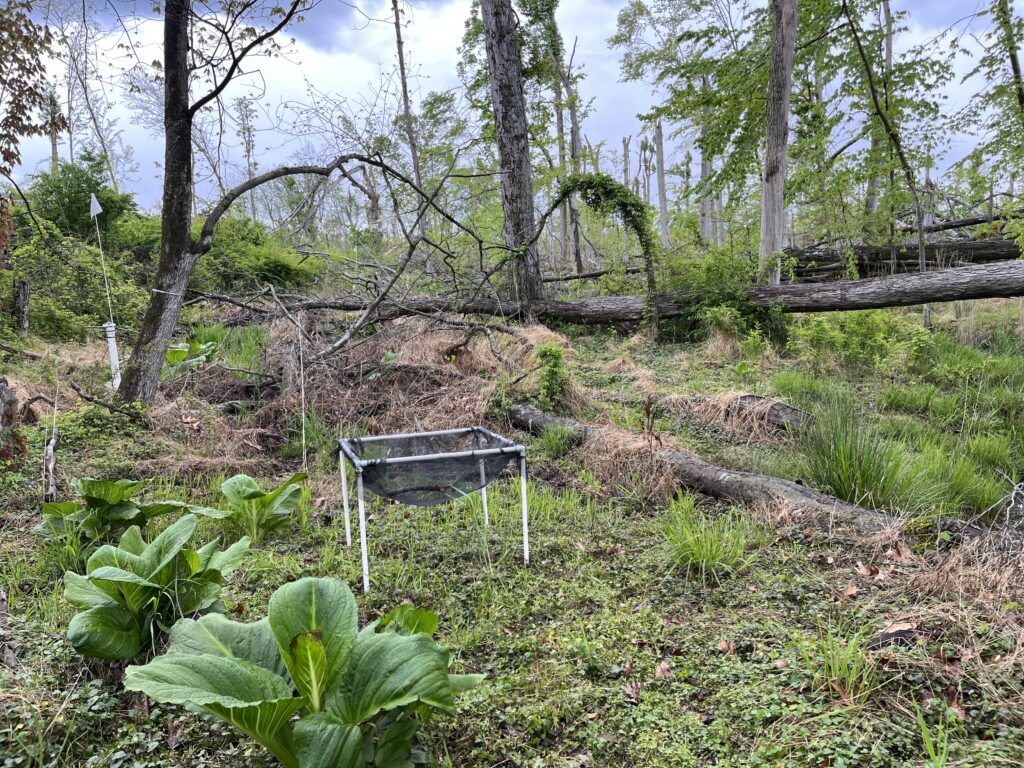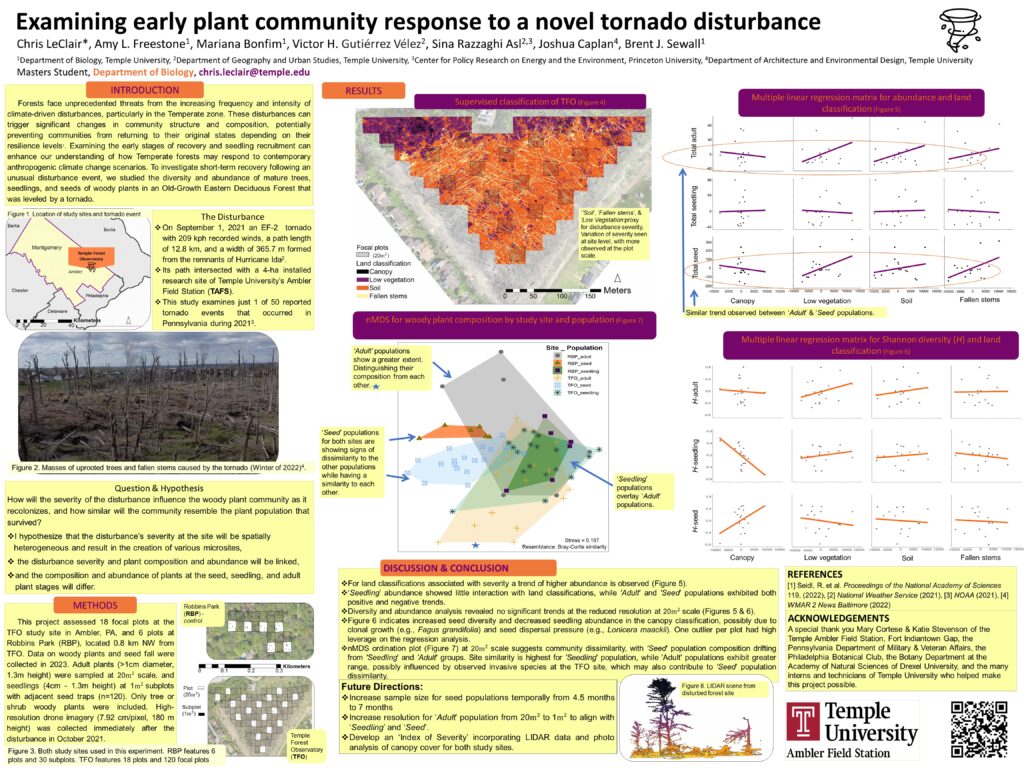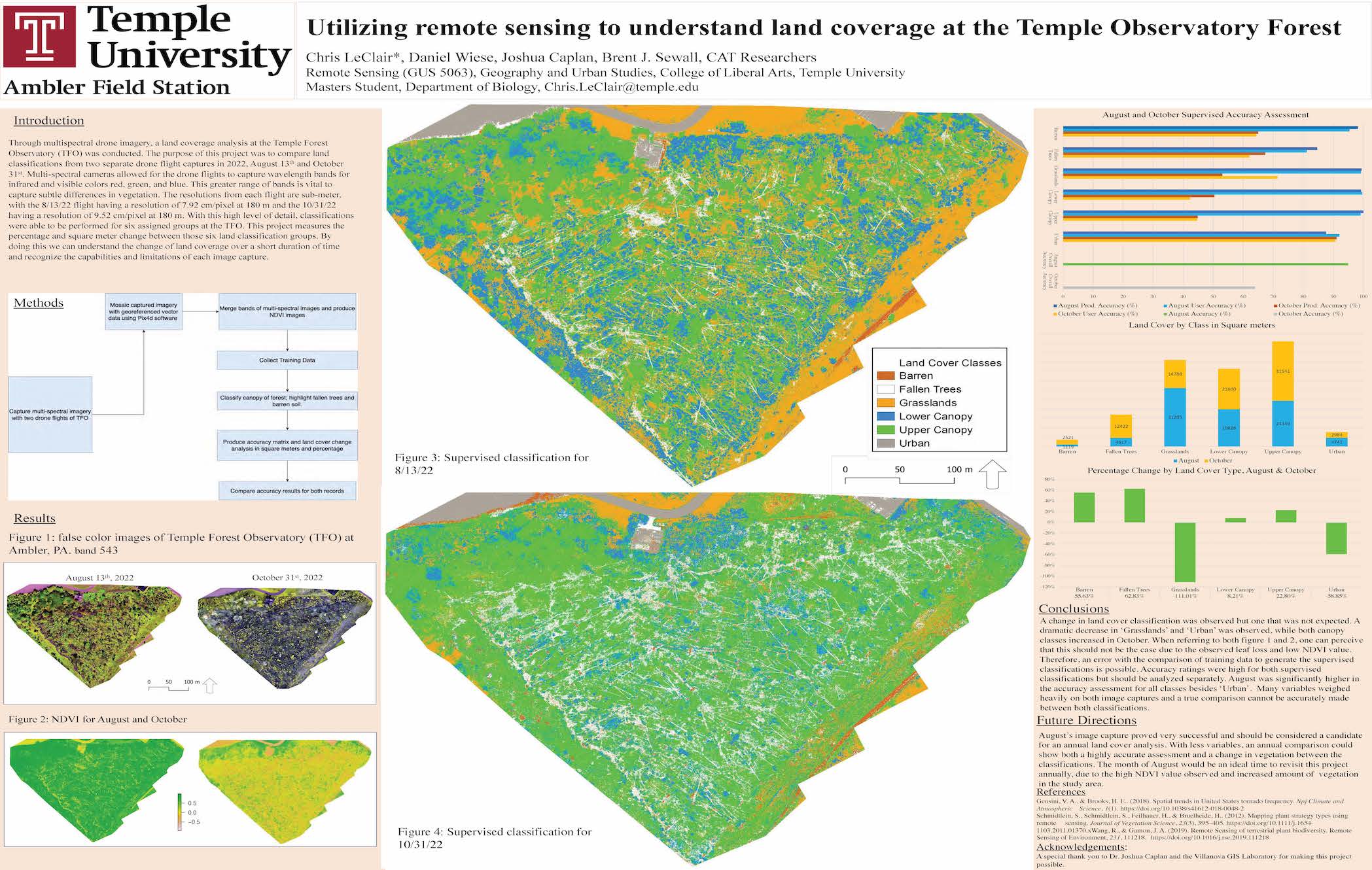Early Plant Community Response to a Novel Tornado Disturbance
Forests face unprecedented threats from the increasing frequency and intensity of climate-driven disturbances, particularly in the Temperate zone. These disturbances can trigger significant changes in community structure and composition, potentially preventing communities from returning to their original states depending on their resilience levels. Examining the early stages of recovery and seedling recruitment can enhance our understanding of how Temperate forests may respond to contemporary anthropogenic climate change scenarios. To investigate short-term recovery following an unusual disturbance event, we studied the diversity and abundance of mature trees, seedlings, and seeds of woody plants in an Old-Growth Eastern Deciduous Forest that was leveled by a tornado.

Species Invasions, Spotted Lanternfly (Lycorma delicatula). With the Sewall Lab and the Temple Ambler Field Station.
The ultimate effects of Spotted Lanternfly (SLF) on Eastern deciduous trees have yet to be determined since its introduction. Our overall goal is to provide additional baseline field data on SLF host tree preferences and wild densities for land management purposes.
Three main objectives of this study
1. Measure free-living distribution among tree species.
2. Measure performance on select tree species.
3. Measure the impacts of low/high SLF densities on select tree species.


 Utilizing remote sensing to understand land coverage at the Temple Observatory Forest_Poster_2022
Utilizing remote sensing to understand land coverage at the Temple Observatory Forest_Poster_2022